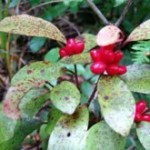Kia ora koutou
I thought I would share with you some of the amazing work and resources available to us through Landcare Research. Among other great resources their Nga Tipu Whakoranga, Maori plant use database is a very useful tool. Check it out sometime when you discover a plant in your area and wonder how Maori may have used it in earlier times.
About Ngā Tipu Whakaoranga – Māori Plant Use Database
What information is in Ngā Tipu Whakaoranga?
The database contains fully referenced, detailed information on how Māori used plants to survive in New Zealand, particularly before the arrival of Europeans. Material relating to later economic uses of native plants is recorded too, though generally not on timber uses and the kauri gum trade.
Fungi and seaweeds are included, and there are references to some Pacific plants, such as Pandanus, that have links to Māori culture.
Also included are pertinent references on traditional resource rights and intellectual property claims relating to plant uses by indigenous peoples.
Here is an example from the database on Horopito;

Pseudowintera axillaris. Horopito. Main reference.
FAMILY: Winteraceae. Closely related to the magnolia family
BOTANICAL NAME: Pseudowintera axillaris 
PREVIOUS NAMES: Drimys axillaris; Wintera axillaris
MĀORI NAME: HOROPITO, puhikawa (Williams 1971)
Fruit: matou (so-called by Arawa; Best 1908. Also Williams 1971)
COMMON NAME: pepper tree
NOTES: The name ‘horopito’ refers to both P.axillaris and the closely related P. colorata. The medicinal notes probably refer to both species. Horopito is perhaps more commonly used these days for P. colorata – which has blotchy coloured leaves, and is more peppery. Both species hybridise.
MEDICINAL: Leaves bruised, steeped in water. Decoction used for paipai, a skin complaint (Taylor 1870 ; Kerry-Nicholls 1886).
‘aromatic and stimulant’ Taylor 1870
Bark – substitute for quinine (Kirk, in Taylor 1870). ‘aromatic and pungent … the ‘Winter’s Bark’ of New Zealand’ (Armstrong 1870).
Occasionally used by settlers suffering from diarrhoea (Kirk 1889).
Sap used by bushmen for stomach ache (Goldie 1905 ; Best 1906, 1908).
Leaves – decoction called ‘bushman’s painkiller’. Chewed for toothache. Rubbed on breast when weaning infants – gives bitter taste (Best 1908, 1929 ; Adams 1945)
Excellent astringent and stimulating properties; anti-scorbutic (Faulkner 1958).
Leaves – infusion for chest ailments. A tablespoon is difficult to swallow, leaves burning sensation in throat and chest (Collier 1959).
For related pharmacology, see Brooker, Cambie and Cooper, 1987.
CHEMISTRY: Essential oils ; 29 compounds isolated that correspond with those found in P. colorata (Briggs et al, 1975).
Brooker, Cambie and Cooper, 1987 state that a decoction of the leaves strongly desensitises humans to sweet and possibly bitter taste sensations without affecting sensitivity to salty and sour properties.
Kai Ora Donna
I have been using the site mentioned above and have found it very useful lately here in Hawkes Bay which has varying climatic changes.
This is very useful for me , i am going to replenish my grden and put in Maori Medicine plants